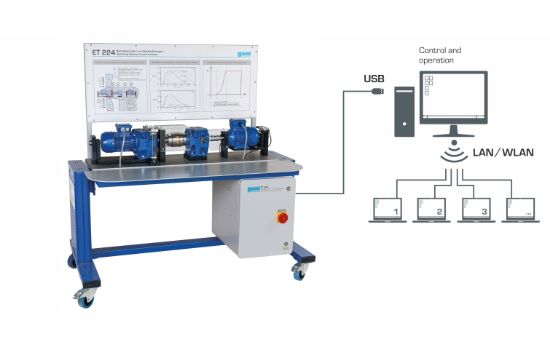The GUNT Wind Turbine Operating Behaviour Trainer investigates the interaction of mechanical, electrical, and control components in wind power systems. Simulating a slowly rotating wind rotor with high torque, this trainer uses a gear motor, spur gear, and synchronous generator to deliver realistic drive train performance. Paired with powerful GUNT software, it enables analysis of characteristic diagrams, turbine control parameters, and energy conversion efficiency under varied operating conditions.
Product Features
- Lab-scale trainer for analyzing wind turbine performance under real and simulated conditions
- Adjustable-speed gear motor simulates a low-speed, high-torque wind rotor
- Three-stage spur gear connects drive motor to a fast-rotating synchronous generator
- Three-phase synchronous generator with rectifier converts mechanical energy into electrical energy
- Electrical load controlled manually or via simulation module in GUNT software
- PC-based control and monitoring via USB-connected GUNT software
- Experiments with simulated rotor characteristic diagrams as functions of wind velocity and blade angle
- Measurement of generator power output and torques at drive and generator sides
- Digital data display within software; sensors capture torque and speed values
- Software supports single readings, automated curve plotting, and autonomous wind-guided turbine simulation
- Network-capable GUNT software supports multi-user observation and analysis via LAN/WLAN
Benefits
- Comprehensive training in wind turbine drive systems and performance optimization
- Hands-on learning of turbine control strategies and load simulation
- Ideal for advanced technical education in renewable energy technologies
- Enables deep analysis of turbine response to wind variability and blade angle adjustments
Why Choose the GUNT Wind Turbine Operating Behaviour Trainer?
The GUNT Wind Turbine Operating Behaviour Trainer offers a complete educational experience in understanding wind turbine dynamics. From simulation to real-time control, it empowers students to explore the complex interactions between rotor mechanics, power generation, and turbine control systems.

